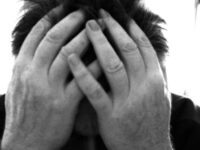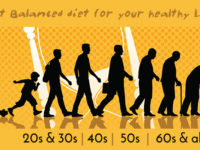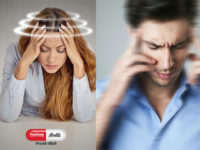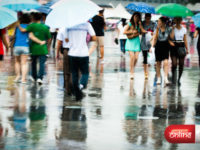A first aid kit is a collection of supplies and equipment that is used to give medical treatment. There is a wide variation in the contents of first aid kits based on the knowledge and experience of those putting it together.
Almost everyone will need to use a first aid kit at some time. Make time to prepare home and travel kits for your family’s safety. First aid kits may be basic or comprehensive. What you need depends on your medical training and your distance from professional medical help. Ready-made first aid kits are commercially available from chain stores or outdoor retailers or with Online Aushadhi. It’s easy to make smart, inexpensive first aid kits.
Home and Travel First Aid Kit Basics
Home first aid kits are usually used for treating these types of minor traumatic injuries:
- Burns
- Cuts
- Abrasions (scrapes)
- Stings
- Splinters
- Sprains
- Strains
First aid kits for travel need to be more comprehensive because a drug store may or may not be accessible. In addition to personal medical items, the kit should contain items to help alleviate the common symptoms of viral respiratory infections such as these:
- Fever
- Nasal congestion
- Cough
- Sore throat
It should also contain items to treat these ailments:
- Cuts
- Mild pain
- Gastrointestinal problems
- Skin problems
- Allergies
Try to keep your kit small and simple. Stock it with multi-use items. Almost anything that provides good visibility of contents can be used for a household first aid kit.
How to Use a First Aid Kit ?
Make sure you know how to properly use all of the items in your kit, especially the medications. Train others in your family to use the kit. You may be the one who needs first aid.
Pack and use barrier items such as latex gloves to protect yourself from the bodily fluids of others. Check the kit twice a year and replace expired drugs.
Where to keep your first aid kit:
The best place to keep your first aid kit is in the kitchen. Most family activities take place here. The bathroom has too much humidity, which shortens the shelf life of items.
The travel kit is for true trips away from home. Keep it in a suitcase, backpack, or dry bag, depending on the activity.
Must-Have First Aid Kit Essentials
You can buy all items for your first aid kits at a well-stocked drug store. Ask the pharmacist for help in selecting items.
A household first aid kit should include these items:
- Adhesive tape
- Anesthetic spray (Bactine) or lotion (Calamine, Campho-Phenique) — for itching rashes and insect bites
- 4″ x 4″ sterile gauze pads — for covering and cleaning wounds, as a soft eye patch
- 2″, 3″, and 4″ Ace bandages — for wrapping sprained or strained joints, for wrapping gauze on to wounds, for wrapping on splints
- Adhesive bandages (all sizes)
- Oral antihistamines
- Topical corticosteroids, such as over the counter Hydrocortisone 1% for rashes
- Aloe vera topical gel or cream for burn relief
- Exam gloves — for infection protection, also to make into ice packs when filled with water and frozen
- Polysporin antibiotic cream — to apply to simple wounds
- Nonadhesive pads (Telfa) — for covering wounds and burns
- Pocket mask for CPR
- Resealable oven bag — as a container for contaminated articles, can become an ice pack
- Safety pins (large and small) — for splinter removal and for securing triangular bandage sling
- Scissors
- Triangular bandage — as a sling, towel, tourniquet
- Tweezers — for splinter or stinger or tick remova
A travel first aid kit may contain these items:
- Adhesive tape
- 4″ x 4″ sterile gauze pads
- Antacid — for indigestion
- Antidiarrheal (Imodium, Pepto-Bismol, for example)
- Antihistamine cream
- Antiseptic agent (small bottle liquid soap) — for cleaning wounds and hands
- Aspirin — for mild pain, heart attack
- Adhesive bandages (all sizes)
- Diphenhydramine (Benadryl) or loratadine (Claritin) — oral antihistamine
- Topical corticosteroids, such as over the counter Hydrocortisone 1% for rashes
- Aloe vera topical gel or cream for burn relief
- Book on first aid
- Cigarette lighter — to sterilize instruments and to be able to start a fire in the wilderness (to keep warm and to make smoke to signal for help, for examples)
- Cough medication
- Dental kit — for broken teeth, loss of crown or filling
- Exam gloves
- Small flashlight
- Ibuprofen (Advil is one brand name)
- Insect repellant
- Knife (small Swiss Army-type)
- Moleskin — to apply to blisters or hot spots
- Nasal spray decongestant — for nasal congestion from colds or allergies
- Nonadhesive wound pads (Telfa)
- Polysporin antibiotic ointment
- Oral decongestant
- Personal medications and items
- Phone card with at least 60 minutes of time (and not a close expiration date) plus at least 10 quarters for pay phones and a list of important people to reach in an emergency
- Plastic resealable bags (oven and sandwich)
- Pocket mask for CPR
- Safety pins (large and small)
- Scissors
- Sunscreen with an SPF of 30 or more
- Thermometer
- Tweezers














